Oribron: An Origami-Inspired Deformable Rigid Bronchoscope for Radial Support
Abstract
1. Introduction
2. Materials and Methods
2.1. Fabrication of the Waterbomb
2.2. Kinematic Modeling
2.3. Finite Element Analysis (FEA)
2.4. Pneumatic Control System
2.5. Smoke Blocking Experiment
2.6. Statistical Analysis
3. Results
3.1. Origami Structural Design
3.2. Kinematic Modeling
3.3. Mechanical Analysis
3.4. Pneumatic Control System
3.5. Simulated Trachea Experiment
4. Discussions
- (1)
- Miniaturization. In theory, the origami method has scale and material independence [70,71,72]. Therefore, any material can be used to make deformable structures of any size if it meets the requirements of processing technology. However, there are still great challenges in practice. On the one hand, the seal structure of a small area needs strong adhesive double-sided tape or glue; otherwise, it is easy to destroy the structural stability, and the symmetry of motion. On the other hand, the small-size actuators need to meet high machining accuracy to accommodate the narrow internal space of #1;
- (2)
- Intelligence. This work used a soft tube to transfer air from a fixed air source to achieve control, lacking an intelligent self-perception and communication transmission ability. Therefore, the integration of lightweight, multifunctional intelligent systems on thin films could be considered in the future, thereby extending the range of applications.
5. Conclusions
- (1)
- Multifunctional deformable RBs were proposed. Compared with the traditional RBs, they can rapidly improve the utilization rate of oxygen in the oxygen supply and have great application potential in the treatment of hypoxia;
- (2)
- Improved Waterbomb CPs were proposed. The folded three-dimensional structure had excellent radial support capability and effectively blocked the escape of smoke in the simulated trachea;
- (3)
- A complete origami kinematic model was established. The model accurately describes the motion path of Waterbomb, and the causes of geometrical conflicts which affect the stability of the structure were found;
- (4)
- A pneumatic artificial muscle actuator (DOF = 1) was designed. The actuator was highly airtight and had a lower cost to manufacture, allowing flexibility to control the deformation process of the Waterbomb.
Supplementary Materials
Author Contributions
Funding
Institutional Review Board Statement
Informed Consent Statement
Data Availability Statement
Acknowledgments
Conflicts of Interest
References
- Diaz-Mendoza, J.; Peralta, A.; Debiane, L.; Simoff, M. Rigid Bronchoscopy. Semin. Respir. Crit. Care Med. 2019, 39, 674–684. [Google Scholar]
- Petrella, F.; Borri, A.; Casiraghi, M.; Cavaliere, S.; Donghi, S.; Galetta, D.; Gasparri, R.; Guarize, J.; Pardolesi, A.; Solli, P.; et al. Operative rigid bronchoscopy: Indications, basic techniques and results. Multimed. Man. Cardiothorac. Surg. 2014, 2014, mmu006. [Google Scholar] [CrossRef] [PubMed]
- Kumar, N.; Akangire, G.; Sullivan, B.; Fairchild, K.; Sampath, V. Continuous vital sign analysis for predicting and preventing neonatal diseases in the twenty-first century: Big data to the forefront. Pediatr. Res. 2020, 87, 210–220. [Google Scholar] [CrossRef] [PubMed]
- Ahmad, R.; Katia, B.; André, R.S. Programming soft robots with flexible mechanical metamaterials. Sci. Robot. 2019, 4, eaav7874. [Google Scholar]
- Ranzani, T.; Cianchetti, M.; Gerboni, G.; Falco, I.D.; Menciassi, A. A Soft Modular Manipulator for Minimally Invasive Surgery: Design and Characterization of a Single Module. IEEE Trans. Robot. 2016, 32, 187–200. [Google Scholar] [CrossRef]
- Melancon, D.; Gorissen, B.; García-Mora, C.J.; Hoberman, C.; Bertoldi, K. Multistable inflatable origami structures at the metre scale. Nature 2021, 592, 545–550. [Google Scholar] [CrossRef]
- Babaee, S.; Shi, Y.; Abbasalizadeh, S.; Tamang, S.; Hess, K.; Collins, J.E.; Ishida, K.; Lopes, A.; Williams, M.; Albaghdadi, M.; et al. Kirigami-inspired stents for sustained local delivery of therapeutics. Nat. Mater. 2021, 20, 1085–1092. [Google Scholar] [CrossRef]
- Jin, L.; Forte, A.E.; Deng, B.; Rafsanjani, A.; Bertoldi, K. Kirigami-Inspired Inflatables with Programmable Shapes. Adv. Mater. 2020, 32, 2001863. [Google Scholar] [CrossRef] [PubMed]
- Belding, L.; Baytekin, B.; Baytekin, H.T.; Rothemund, P.; Verma, M.S.; Nemiroski, A.; Sameoto, D.; Grzybowski, B.A.; Whitesides, G.M. Slit Tubes for Semisoft Pneumatic Actuators. Adv. Mater. 2018, 30, 1704446. [Google Scholar] [CrossRef]
- Rafsanjani, A.; Zhang, Y.; Liu, B.; Rubinstein, S.M.; Bertoldi, K. Kirigami skins make a simple soft actuator crawl. Sci. Robot. 2018, 3, eaar7555. [Google Scholar] [CrossRef] [PubMed]
- Zhao, Z.; Wu, J.; Mu, X.; Chen, H.; Qi, H.J.; Fang, D. Origami by frontal photopolymerization. Sci. Adv. 2017, 3, e1602326. [Google Scholar] [CrossRef]
- Boatti, E.; Vasios, N.; Bertoldi, K. Origami Metamaterials for Tunable Thermal Expansion. Adv. Mater. 2017, 29, 1700360. [Google Scholar] [CrossRef]
- Zhang, J.; Ren, Z.; Hu, W.; Soon, R.H.; Yasa, I.C.; Liu, Z.; Sitti, M. Voxelated three-dimensional miniature magnetic soft machines via multimaterial heterogeneous assembly. Sci. Robot. 2021, 6, eabf0112. [Google Scholar] [CrossRef] [PubMed]
- Boyvat, M.; Koh, J.S.; Wood, R.J. Addressable wireless actuation for multijoint folding robots and devices. Sci. Robot. 2017, 2, eaan1544. [Google Scholar] [CrossRef]
- Hughes, J.; Culha, U.; Giardina, F.; Guenther, F.; Rosendo, A.; Iida, F. Soft Manipulators and Grippers: A Review. Front. Robot. AI 2016, 3, 69. [Google Scholar] [CrossRef]
- Kim, S.; Laschi, C.; Trimmer, B. Soft robotics: A bioinspired evolution in robotics. Trends Biotechnol. 2013, 31, 287–294. [Google Scholar] [CrossRef] [PubMed]
- Laschi, C.; Mazzolai, B.; Cianchetti, M. Soft robotics: Technologies and systems pushing the boundaries of robot abilities. Sci. Robot. 2016, 1, eaah3690. [Google Scholar] [CrossRef] [PubMed]
- Wallin, T.J.; Pikul, J.; Shepherd, R.F. 3D printing of soft robotic systems. Nat. Rev. Mater. 2018, 3, 84–100. [Google Scholar] [CrossRef]
- Sachyani Keneth, E.; Kamyshny, A.; Totaro, M.; Beccai, L.; Magdassi, S. 3D Printing Materials for Soft Robotics. Adv. Mater. 2021, 33, 2003387. [Google Scholar] [CrossRef] [PubMed]
- Lang, R.J. Origami: Complexity in creases (again). Eng. Sci. 2004, 67, 5–19. [Google Scholar]
- Mahadevan, L.; Rica, S. Self-Organized Origami. Science 2005, 307, 1740. [Google Scholar] [CrossRef] [PubMed]
- Rus, D.; Tolley, M.T. Design, fabrication and control of origami robots. Nat. Rev. Mater. 2018, 3, 101–112. [Google Scholar] [CrossRef]
- Babaee, S.; Overvelde, J.T.; Chen, E.R.; Tournat, V.; Bertoldi, K. Reconfigurable origami-inspired acoustic waveguides. Sci. Adv. 2016, 2, e1601019. [Google Scholar] [CrossRef]
- Mintchev, S.; Shintake, J.; Floreano, D. Bioinspired dual-stiffness origami. Sci. Robot. 2018, 3, eaau0275. [Google Scholar] [CrossRef] [PubMed]
- Kim, W.; Byun, J.; Kim, J.K.; Choi, W.Y.; Jakobsen, K.; Jakobsen, J.; Lee, D.Y.; Cho, K.J. Bioinspired dual-morphing stretchable origami. Sci. Robot. 2019, 4, eaay3493. [Google Scholar] [CrossRef] [PubMed]
- Farzaneh, A.; Pawar, N.; Portela, C.M.; Hopkins, J.B. Sequential metamaterials with alternating Poisson’s ratios. Nat. Commun. 2022, 13, 1041. [Google Scholar] [CrossRef]
- Suzuki, H.; Wood, R.J. Origami-inspired miniature manipulator for teleoperated microsurgery. Nat. Mach. Intell. 2020, 2, 437–446. [Google Scholar] [CrossRef]
- Salerno, M.; Zhang, K.; Menciassi, A.; Dai, J.S. A novel 4-DOFs origami enabled, SMA actuated, robotic end-effector for minimally invasive surgery. In Proceedings of the 2014 IEEE International Conference on Robotics and Automation (ICRA), Hong Kong, China, 31 May–7 June 2014. [Google Scholar]
- Kotikian, A.; McMahan, C.; Davidson, E.C.; Muhammad, J.M.; Weeks, R.D.; Daraio, C.; Lewis, J.A. Untethered soft robotic matter with passive control of shape morphing and propulsion. Sci. Robot. 2019, 4, eaax7044. [Google Scholar] [CrossRef] [PubMed]
- Yang, H.; Yeow, B.S.; Li, Z.; Li, K.; Chang, T.H.; Jing, L.; Li, Y.; Ho, J.S.; Ren, H.; Chen, P.Y. Multifunctional metallic backbones for origami robotics with strain sensing and wireless communication capabilities. Sci. Robot. 2019, 4, eaax7020. [Google Scholar] [CrossRef] [PubMed]
- Zhakypov, Z.; Mori, K.; Hosoda, K.; Paik, J. Designing minimal and scalable insect-inspired multi-locomotion millirobots. Nature 2019, 571, 381–386. [Google Scholar] [CrossRef]
- Yu, X.; Zhou, J.; Liang, H.; Jiang, Z.; Wu, L. Mechanical metamaterials associated with stiffness, rigidity and compressibility: A brief review. Prog. Mater. Sci. 2018, 94, 114–173. [Google Scholar]
- Li, S.; Fang, H.; Sadeghi, S.; Bhovad, P.; Wang, K.W. Architected Origami Materials: How Folding Creates Sophisticated Mechanical Properties. Adv. Mater. 2019, 31, e1805282. [Google Scholar] [CrossRef] [PubMed]
- Treml, B.; Gillman, A.; Buskohl, P.; Vaia, R. Origami mechanologic. Proc. Natl. Acad. Sci. USA 2018, 115, 6916–6921. [Google Scholar] [CrossRef]
- Mukhopadhyay, T.; Ma, J.; Feng, H.; Hou, D.; Gattas, J.M.; Chen, Y.; You, Z. Programmable stiffness and shape modulation in origami materials: Emergence of a distant actuation feature. Appl. Mater. Today 2020, 19, 100537. [Google Scholar] [CrossRef]
- Venkatesh, S.; Sturm, D.; Lu, X.; Lang, R.J.; Sengupta, K. Origami Microwave Imaging Array: Metasurface Tiles on a Shape-Morphing Surface for Reconfigurable Computational Imaging. Adv. Sci. 2022, 9, e2105016. [Google Scholar] [CrossRef] [PubMed]
- Ze, Q.; Wu, S.; Dai, J.; Leanza, S.; Ikeda, G.; Yang, P.C.; Iaccarino, G.; Zhao, R.R. Spinning-enabled wireless amphibious origami millirobot. Nat. Commun. 2022, 13, 3118. [Google Scholar] [CrossRef]
- Ze, Q.; Wu, S.; Nishikawa, J.; Dai, J.; Sun, Y.; Leanza, S.; Zemelka, C.; Novelino, L.S.; Paulino, G.H.; Zhao, R.R. Soft robotic origami crawler. Sci. Adv. 2022, 8, eabm7834. [Google Scholar] [CrossRef]
- Wu, S.; Ze, Q.; Dai, J.; Udipi, N.; Paulino, G.H.; Zhao, R. Stretchable origami robotic arm with omnidirectional bending and twisting. Proc. Natl. Acad. Sci. USA 2021, 118, e2110023118. [Google Scholar] [CrossRef]
- Chen, B.; Shao, Z.; Xie, Z.; Liu, J.; Pan, F.; He, L.; Zhang, L.; Zhang, Y.; Ling, X.; Peng, F.; et al. Soft Origami Gripper with Variable Effective Length. Adv. Intell. Syst. 2021, 3, 2000251. [Google Scholar] [CrossRef]
- Silverberg, J.L.; Evans, A.A.; McLeod, L.; Hayward, R.C.; Hull, T.; Santangelo, C.D.; Cohen, I. Using origami design principles to fold reprogrammable mechanical metamaterials. Science 2014, 345, 647–650. [Google Scholar] [CrossRef] [PubMed]
- Liu, K.; Pratapa, P.P.; Misseroni, D.; Tachi, T.; Paulino, G.H. Triclinic Metamaterials by Tristable Origami with Reprogrammable Frustration. Adv. Mater. 2022, 34, 2107998. [Google Scholar] [CrossRef]
- Lang, R.J.; Magleby, S.; Howell, L. Single Degree-of-Freedom Rigidly Foldable Cut Origami Flashers. J. Mech. Robot. 2016, 8, 031005. [Google Scholar] [CrossRef]
- Tian, C.; Osama, R.B.; Robert, L.; Chiara, D.; Kristina, S. Autonomous Deployment of a Solar Panel Using Elastic Origami and Distributed Shape-Memory-Polymer Actuators. Phys. Rev. Appl. 2019, 11, 064069. [Google Scholar]
- Silverberg, J.L.; Na, J.-H.; Evans, A.A.; Liu, B.; Hull, T.C.; Santangelo, C.D.; Lang, R.J.; Hayward, R.C.; Cohen, I. Origami structures with a critical transition to bistability arising from hidden degrees of freedom. Nat. Mater. 2015, 14, 389–393. [Google Scholar] [CrossRef]
- Wang, L.C.; Song, W.L.; Zhang, Y.J.; Qu, M.J.; Zhao, Z.; Chen, M.; Yang, Y.; Chen, H.; Fang, D. Active Reconfigurable Tristable Square-Twist Origami. Adv. Funct. Mater. 2020, 30, 1909087. [Google Scholar] [CrossRef]
- Ma, J.; Feng, H.; Chen, Y.; Hou, D.; You, Z. Folding of Tubular Waterbomb. Research 2020, 2020, 1735081. [Google Scholar] [CrossRef] [PubMed]
- Lee, D.Y.; Kim, J.K.; Sohn, C.Y.; Heo, J.M.; Cho, K.J. High-load capacity origami transformable wheel. Sci. Robot. 2021, 6, eabe0201. [Google Scholar] [CrossRef] [PubMed]
- Lee, D.Y.; Kim, S.R.; Kim, J.S.; Park, J.J.; Cho, K.J. Origami Wheel Transformer: A Variable-Diameter Wheel Drive Robot Using an Origami Structure. Soft Robot. 2017, 4, 163–180. [Google Scholar] [CrossRef]
- Onal, C.D.; Wood, R.J.; Rus, D. An Origami-Inspired Approach to Worm Robots. IEEE/ASME Trans. Mechatron. 2013, 18, 430–438. [Google Scholar] [CrossRef]
- Fang, H.; Zhang, Y.; Wang, K.W. Origami-based earthworm-like locomotion robots. Bioinspiration Biomim. 2017, 12, 065003. [Google Scholar] [CrossRef] [PubMed]
- Velvaluri, P.; Soor, A.; Plucinsky, P.; de Miranda, R.L.; James, R.D.; Quandt, E. Origami-inspired thin-film shape memory alloy devices. Sci. Rep. 2021, 11, 10988. [Google Scholar] [CrossRef] [PubMed]
- Kuribayashi, K.; Tsuchiya, K.; You, Z.; Tomus, D.; Umemoto, M.; Ito, T.; Sasaki, M. Self-deployable origami stent grafts as a biomedical application of Ni-rich TiNi shape memory alloy foil. Mater. Sci. Eng. A 2006, 419, 131–137. [Google Scholar] [CrossRef]
- Greenberg, H.C.; Gong, M.L.; Magleby, S.P.; Howell, L.L. Identifying links between origami and compliant mechanisms. Mech. Sci. 2011, 2, 217–225. [Google Scholar] [CrossRef]
- Meloni, M.; Cai, J.; Zhang, Q.; Sang Hoon Lee, D.; Li, M.; Ma, R.; Parashkevov, T.E.; Feng, J. Engineering Origami: A Comprehensive Review of Recent Applications, Design Methods, and Tools. Adv. Sci. 2021, 8, 2000636. [Google Scholar] [CrossRef]
- Matsukawa, Y.; Mitani, J. Mathematics of Flat Origami. Trans. Jpn. Soc. Ind. Appl. Math. 2017, 27, 333–353. [Google Scholar]
- Zhang, Q.; Fang, H.; Xu, J. Yoshimura-origami Based Earthworm-like Robot With 3-dimensional Locomotion Capability. Front. Robot. AI 2021, 8, 738214. [Google Scholar] [CrossRef]
- Li, S.; Stampfli, J.J.; Xu, H.J.; Malkin, E.; Diaz, E.V.; Rus, D.; Wood, R.J. A Vacuum-driven Origami “Magic-ball” Soft Gripper. In Proceedings of the 2019 International Conference on Robotics and Automation (ICRA), Montreal, QC, Canada, 20–24 May 2019. [Google Scholar] [CrossRef]
- Brandon, H.H.; Jason, M.L.; Robert, J.L.; Spencer, P.M.; Larry, L.H. Waterbomb base: A symmetric single-vertex bistable origami mechanism. Smart Mater. Struct. 2014, 23, 094009. [Google Scholar]
- Fonseca, L.M.; Savi, M.A. On the symmetries of the origami waterbomb pattern: Kinematics and mechanical investigations. Meccanica 2021, 56, 2575–2598. [Google Scholar] [CrossRef]
- Zhang, X.; Chen, Y. Vertex-Splitting on a Diamond Origami Pattern. J. Mech. Robot. 2019, 11, 031014. [Google Scholar] [CrossRef]
- Yan, C.; Rui, P.; Zhong, Y. Origami of thick panels. Science 2015, 349, 396–400. [Google Scholar]
- Huijuan, F.; Jiayao, M.; Rui, P.; Yan, C. Rigid Foldability of Generalized Triangle Twist Origami Pattern and Its Derived 6R Linkages. J. Mech. Robot. 2018, 10, 051003. [Google Scholar]
- Tawk, C.; Alici, G. A Review of 3D-Printable Soft Pneumatic Actuators and Sensors: Research Challenges and Opportunities. Adv. Intell. Syst. 2021, 3, 2000223. [Google Scholar] [CrossRef]
- Lara-Canton, I.; Badurdeen, S.; Dekker, J.; Davis, P.; Roberts, C.; Te Pas, A.; Vento, M. Oxygen saturation and heart rate in healthy term and late preterm infants with delayed cord clamping. Pediatr. Res. 2022. [Google Scholar] [CrossRef]
- Shao, D.; Liu, C.; Tsow, F.; Yang, Y.; Du, Z.; Iriya, R.; Yu, H.; Tao, N. Noncontact Monitoring of Blood Oxygen Saturation Using Camera and Dual-Wavelength Imaging System. IEEE Trans. Biomed. Eng. 2016, 63, 1091–1098. [Google Scholar] [CrossRef] [PubMed]
- Liu, S.T.H.; Lin, H.M.; Baine, I.; Wajnberg, A.; Gumprecht, J.P.; Rahman, F.; Rodriguez, D.; Tandon, P.; Bassily-Marcus, A.; Bander, J.; et al. Convalescent plasma treatment of severe COVID-19: A propensity score-matched control study. Nat. Med. 2020, 26, 1708–1713. [Google Scholar] [CrossRef]
- Lassau, N.; Ammari, S.; Chouzenoux, E.; Gortais, H.; Herent, P.; Devilder, M.; Soliman, S.; Meyrignac, O.; Talabard, M.P.; Lamarque, J.P.; et al. Integrating deep learning CT-scan model, biological and clinical variables to predict severity of COVID-19 patients. Nat. Commun. 2021, 12, 634. [Google Scholar] [CrossRef] [PubMed]
- Herrmann, J.; Mori, V.; Bates, J.H.T.; Suki, B. Modeling lung perfusion abnormalities to explain early COVID-19 hypoxemia. Nat. Commun. 2020, 11, 4883. [Google Scholar] [CrossRef] [PubMed]
- Schenk, M.; Guest, S.D. Geometry of Miura-folded metamaterials. Proc. Natl. Acad. Sci. USA 2013, 110, 3276–3281. [Google Scholar] [CrossRef]
- Wang, H.; Zhao, D.; Jin, Y.; Wang, M.; Mukhopadhyay, T.; You, Z. Modulation of multi-directional auxeticity in hybrid origami metamaterials. Appl. Mater. Today 2020, 20, 100715. [Google Scholar] [CrossRef]
- Fang, H.; Chu, S.C.A.; Xia, Y.; Wang, K.W. Programmable Self-Locking Origami Mechanical Metamaterials. Adv. Mater. 2018, 30, 1706311. [Google Scholar] [CrossRef]
- Masclans, J.R.; Roca, O. High-flow Oxygen Therapy in Acute Respiratory Failure. Clin. Pulm. Med. 2012, 19, 127–130. [Google Scholar] [CrossRef]
- Frat, J.P.; Thille, A.W.; Mercat, A.; Girault, C.; Ragot, S.; Perbet, S.; Prat, G.; Boulain, T.; Morawiec, E.; Cottereau, A.; et al. High-flow oxygen through nasal cannula in acute hypoxemic respiratory failure. N. Engl. J. Med. 2015, 372, 2185–2196. [Google Scholar] [CrossRef] [PubMed]
- Hernandez, G.; Vaquero, C.; Gonzalez, P.; Subira, C.; Frutos-Vivar, F.; Rialp, G.; Laborda, C.; Colinas, L.; Cuena, R.; Fernandez, R. Effect of Postextubation High-Flow Nasal Cannula vs Conventional Oxygen Therapy on Reintubation in Low-Risk Patients: A Randomized Clinical Trial. JAMA 2016, 315, 1354–1361. [Google Scholar] [CrossRef] [PubMed]
- American Association for Respiratory Care; Restrepo, R.D.; Walsh, B.K. Humidification during invasive and noninvasive mechanical ventilation: 2012. Respir. Care 2012, 57, 782–788. [Google Scholar] [CrossRef]
- Hess, D.R. Respiratory mechanics in mechanically ventilated patients. Respir. Care 2014, 59, 1773–1794. [Google Scholar] [CrossRef]
- Lellouche, F.; Taille, S.; Maggiore, S.M.; Qader, S.; L’Her, E.; Deye, N.; Brochard, L. Influence of ambient and ventilator output temperatures on performance of heated-wire humidifiers. Am. J. Respir. Crit. Care Med. 2004, 170, 1073–1079. [Google Scholar] [CrossRef]
- Hill, N.S.; Brennan, J.; Garpestad, E.; Nava, S.J.C.C.M. Non-invasive ventilation in acute respiratory failure. Crit. Care Med. 2007, 35, 2402–2407. [Google Scholar] [CrossRef] [PubMed]
- Pathak, V.; Welsby, I.; Mahmood, K.; Wahidi, M.; MacIntyre, N.; Shofer, S. Ventilation and anesthetic approaches for rigid bronchoscopy. Ann. Am. Thorac. Soc. 2014, 11, 628–634. [Google Scholar] [CrossRef]
- Welham, S.A.; O’Driscoll, B.R.; Howard, L.S.G.; Davison, A.G.; Head, S.E.J.O.; Surgery, N. P50–BTS Guideline for Emergency Oxygen Use in Adult Patients. Otolaryngol.–Head Neck Surg. 2010, 143 (Suppl. S1), 103–104. [Google Scholar] [CrossRef]
- O’driscoll, B.R.; Howard, L.S.; Earis, J.; Mak, V. BTS guideline for oxygen use in adults in healthcare and emergency settings. Thorax 2017, 72 (suppl. S1), ii1–ii90. [Google Scholar] [CrossRef] [PubMed]
- Hanania, N.; Shara, G.; Sharafkhaneh, A. COPD in the Elderly Patient. Semin. Respir. Crit. Care Med. 2010, 31, 596–606. [Google Scholar] [CrossRef] [PubMed]
- Tashkin, D.P. A review of nebulized drug delivery in COPD. Int. J. Chronic Obstr. Pulm. Dis. 2016, 11, 2585–2596. [Google Scholar] [CrossRef] [PubMed]
- Matera, M.G.; Rogliani, P.; Calzetta, L.; Cazzola, M.J.D.S. Safety Considerations with Dual Bronchodilator Therapy in COPD: An Update. Drug Saf. 2016, 39, 501–508. [Google Scholar] [CrossRef] [PubMed]
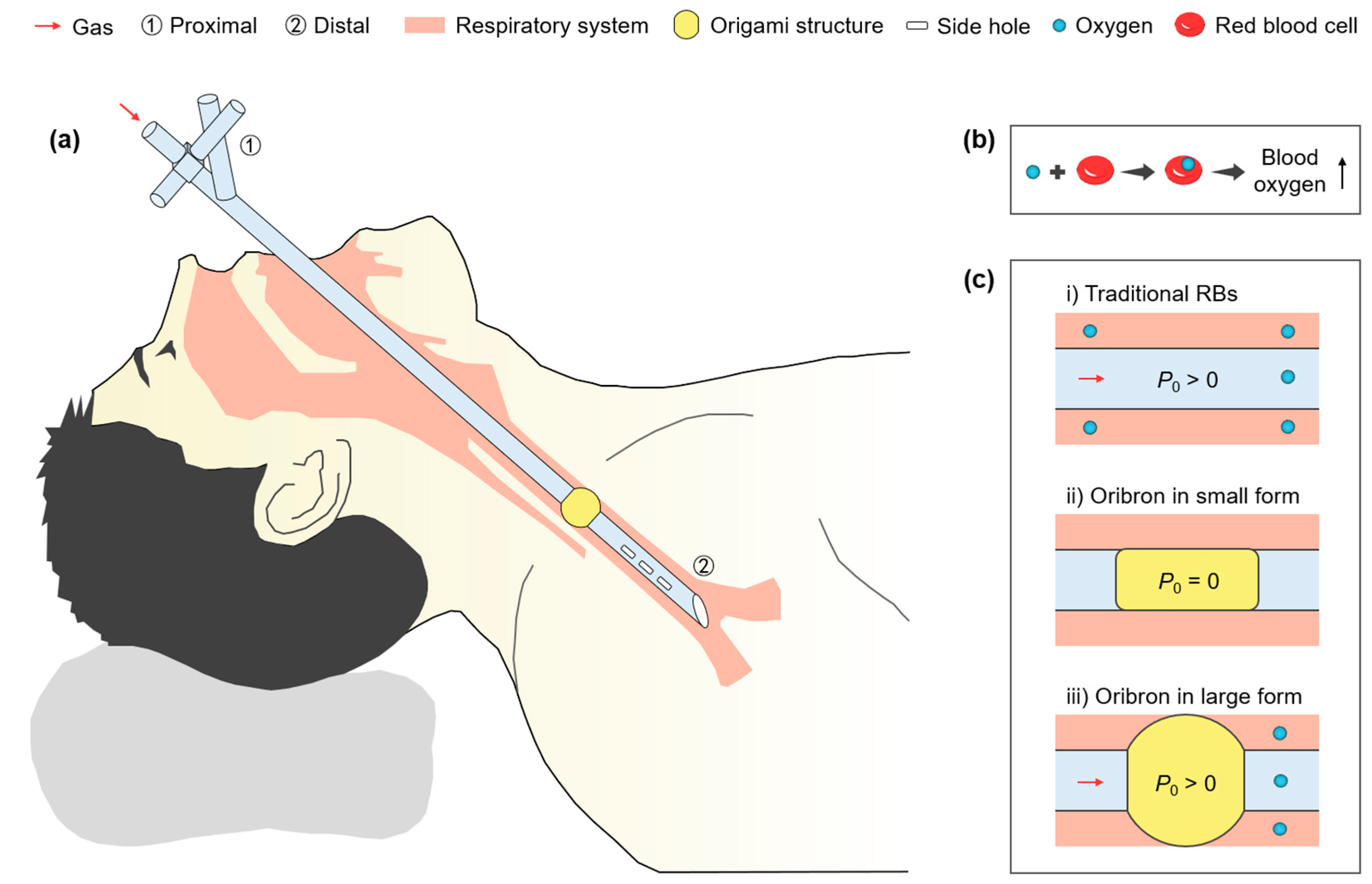
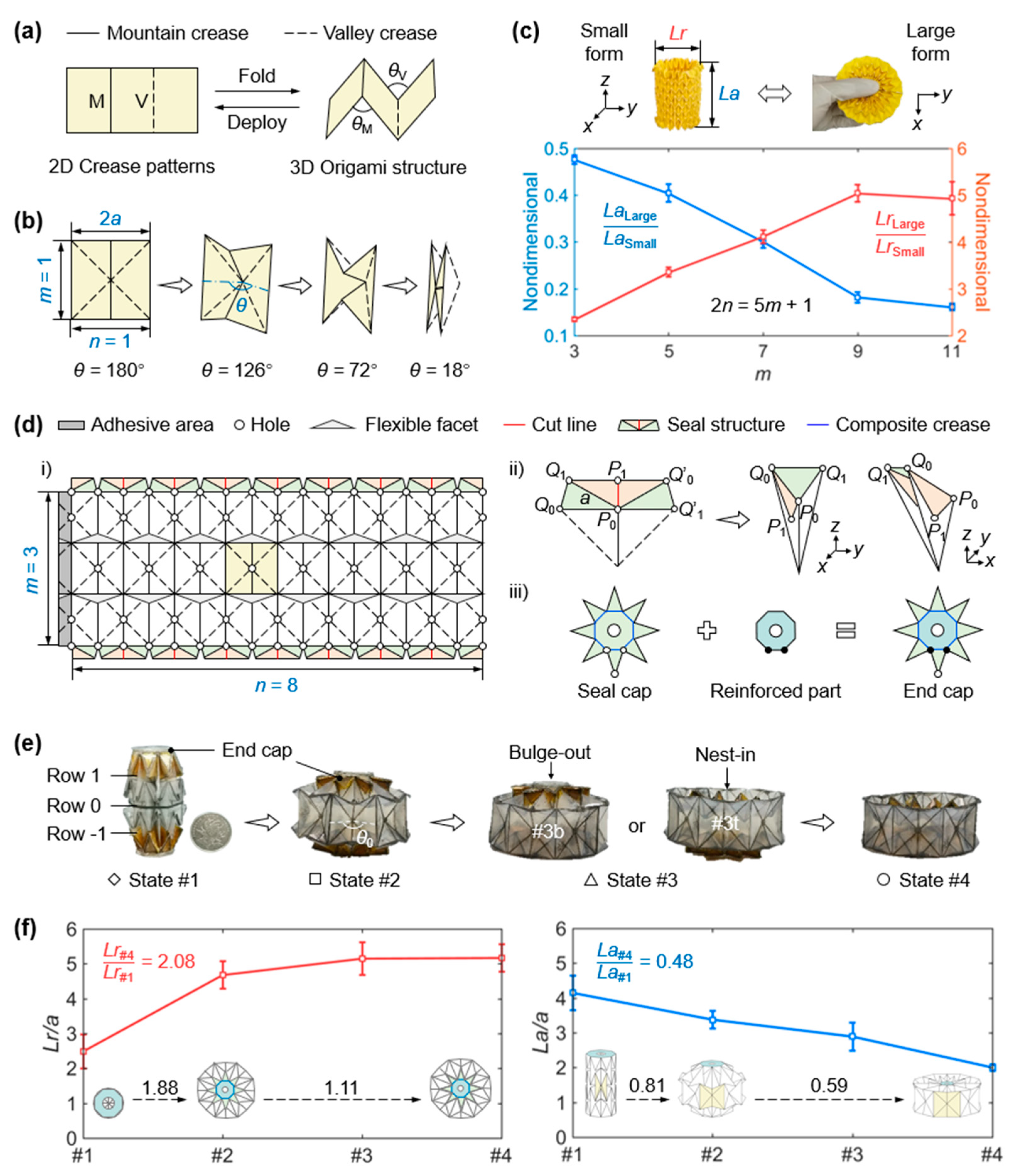

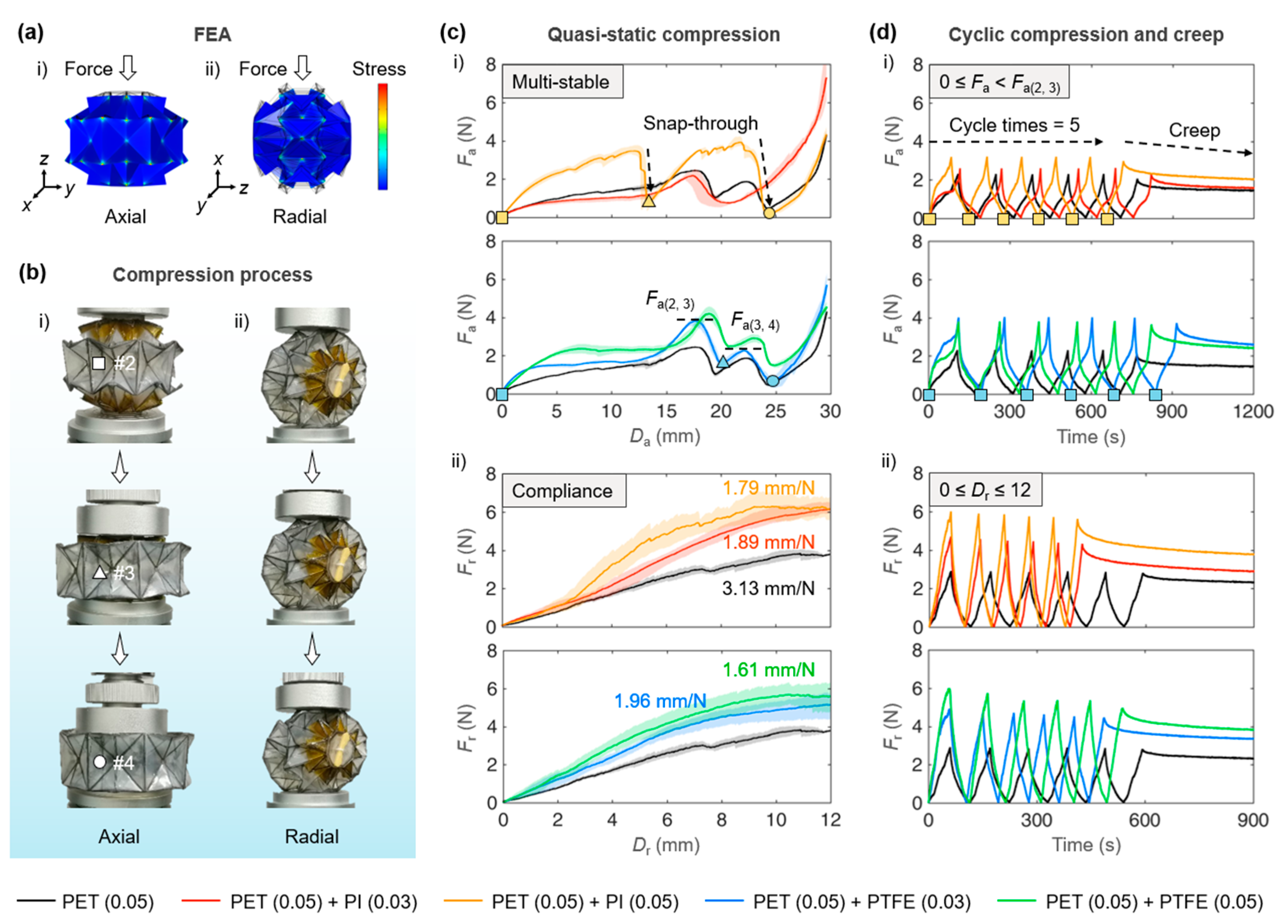
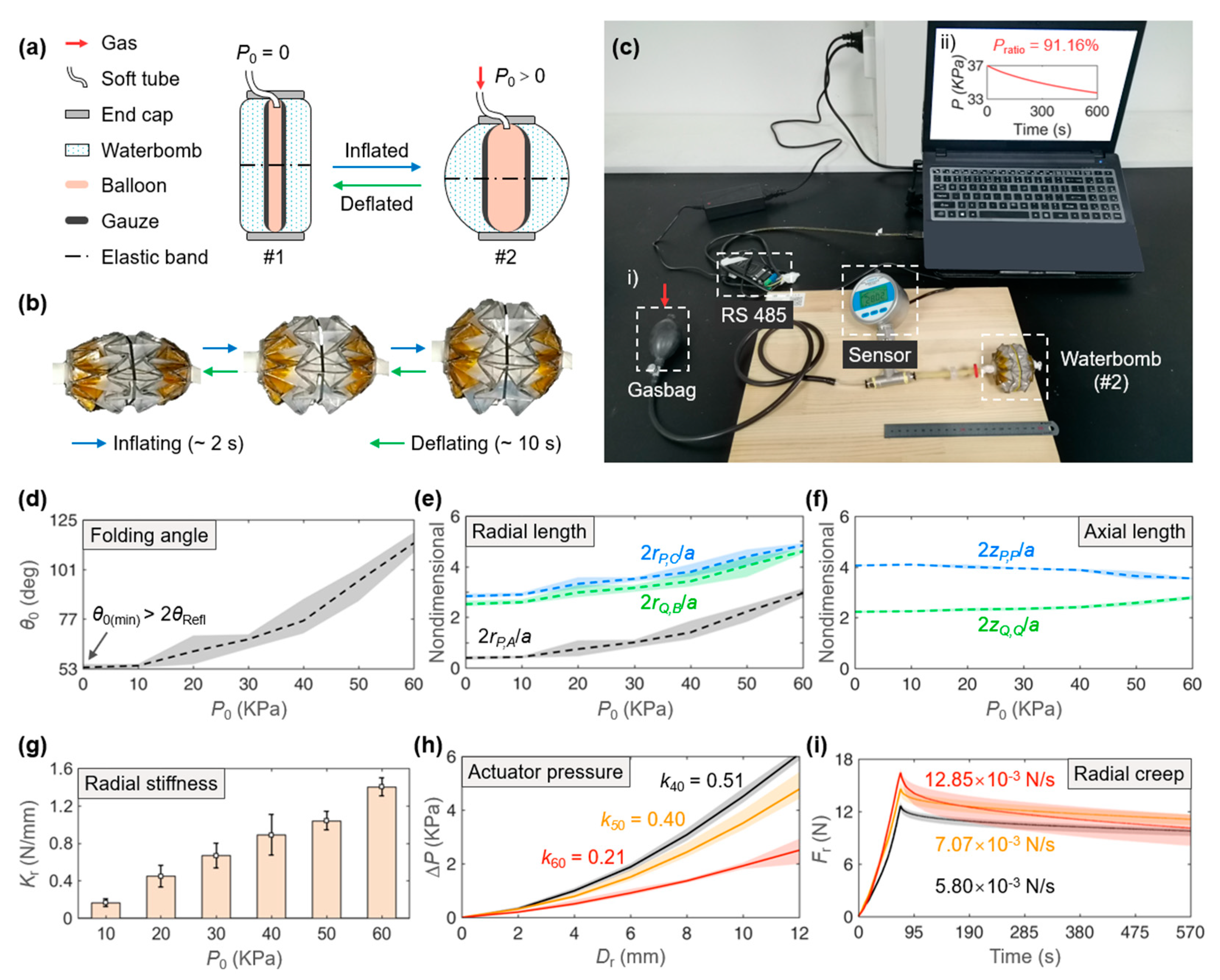
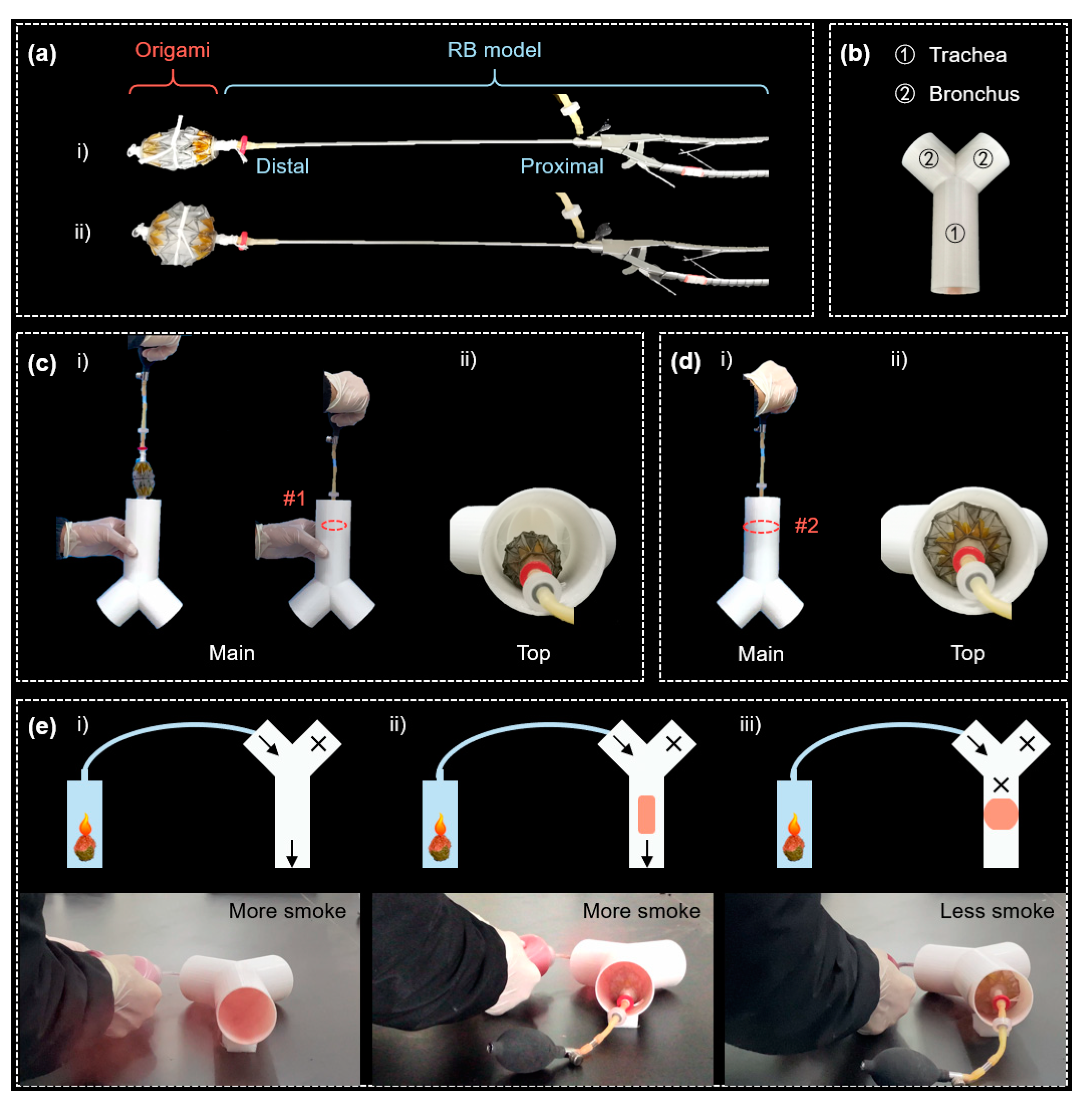
| Group | Thickness of Materials(mm) | Mass (g) | R2 | Kr (N/mm) | Vfr (10−3 N/s) | Vfa (10−3 N/s) |
|---|---|---|---|---|---|---|
| i | PET (0.05) | 3.96 | 0.98 | 0.32 | 1.40 | 1.47 |
| ii | PET (0.05) + PI (0.03) | 6.18 | 0.99 | 0.53 | 2.98 | 1.57 |
| PET (0.05) + PI (0.05) | 7.11 | 0.93 | 0.56 | 3.70 | 1.95 | |
| iii | PET (0.05) + PTFE (0.03) | 8.47 | 0.90 | 0.51 | 1.38 | 3.17 |
| PET (0.05) + PTFE (0.05) | 9.36 | 0.97 | 0.62 | 3.15 | 3.30 |
| P0 (KPa) | Kr (N/mm) | ∆P/Dr (KPa/mm) | Vfr (10−3 N/s) |
|---|---|---|---|
| 40 | 0.89 | 0.51 | 5.80 |
| 50 | 1.04 | 0.40 | 7.07 |
| 60 | 1.40 | 0.21 | 12.85 |
Disclaimer/Publisher’s Note: The statements, opinions and data contained in all publications are solely those of the individual author(s) and contributor(s) and not of MDPI and/or the editor(s). MDPI and/or the editor(s) disclaim responsibility for any injury to people or property resulting from any ideas, methods, instructions or products referred to in the content. |
© 2023 by the authors. Licensee MDPI, Basel, Switzerland. This article is an open access article distributed under the terms and conditions of the Creative Commons Attribution (CC BY) license (https://creativecommons.org/licenses/by/4.0/).
Share and Cite
Su, J.; Zhang, Y.; Cheng, L.; Zhu, L.; Yang, R.; Niu, F.; Yang, K.; Duan, Y. Oribron: An Origami-Inspired Deformable Rigid Bronchoscope for Radial Support. Micromachines 2023, 14, 822. https://doi.org/10.3390/mi14040822
Su J, Zhang Y, Cheng L, Zhu L, Yang R, Niu F, Yang K, Duan Y. Oribron: An Origami-Inspired Deformable Rigid Bronchoscope for Radial Support. Micromachines. 2023; 14(4):822. https://doi.org/10.3390/mi14040822
Chicago/Turabian StyleSu, Junjie, Yangyang Zhang, Liang Cheng, Ling Zhu, Runhuai Yang, Fuzhou Niu, Ke Yang, and Yuping Duan. 2023. "Oribron: An Origami-Inspired Deformable Rigid Bronchoscope for Radial Support" Micromachines 14, no. 4: 822. https://doi.org/10.3390/mi14040822
APA StyleSu, J., Zhang, Y., Cheng, L., Zhu, L., Yang, R., Niu, F., Yang, K., & Duan, Y. (2023). Oribron: An Origami-Inspired Deformable Rigid Bronchoscope for Radial Support. Micromachines, 14(4), 822. https://doi.org/10.3390/mi14040822









